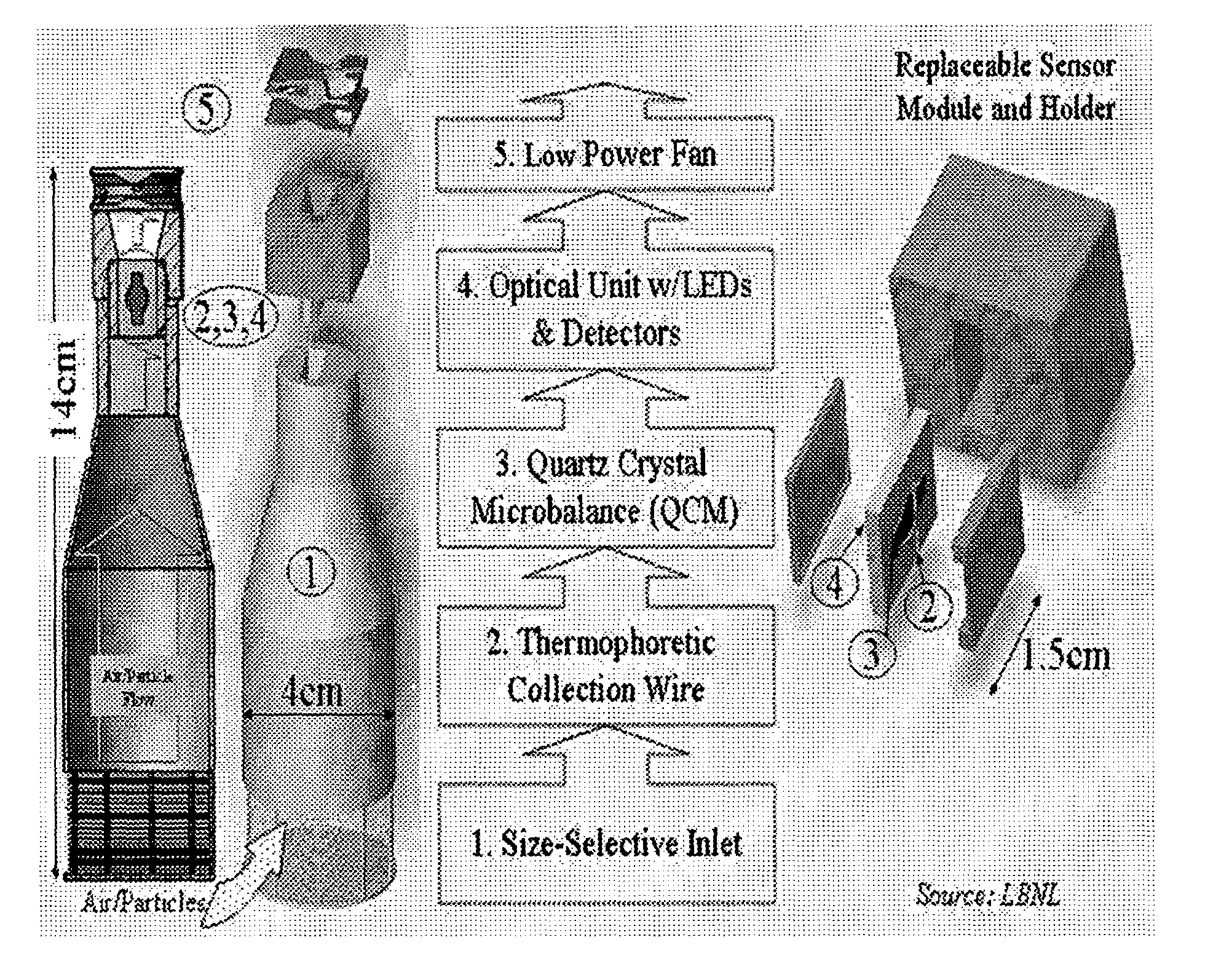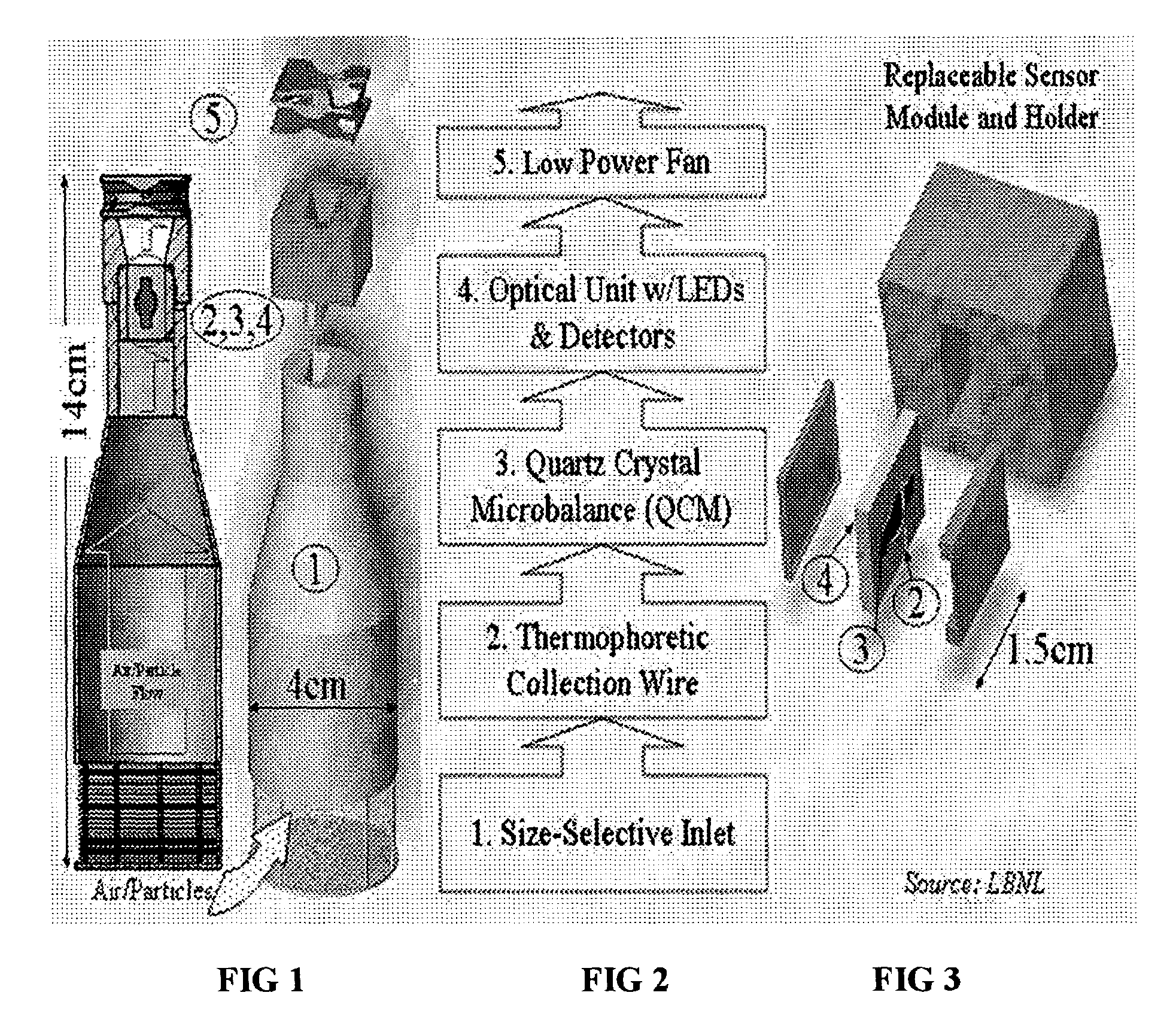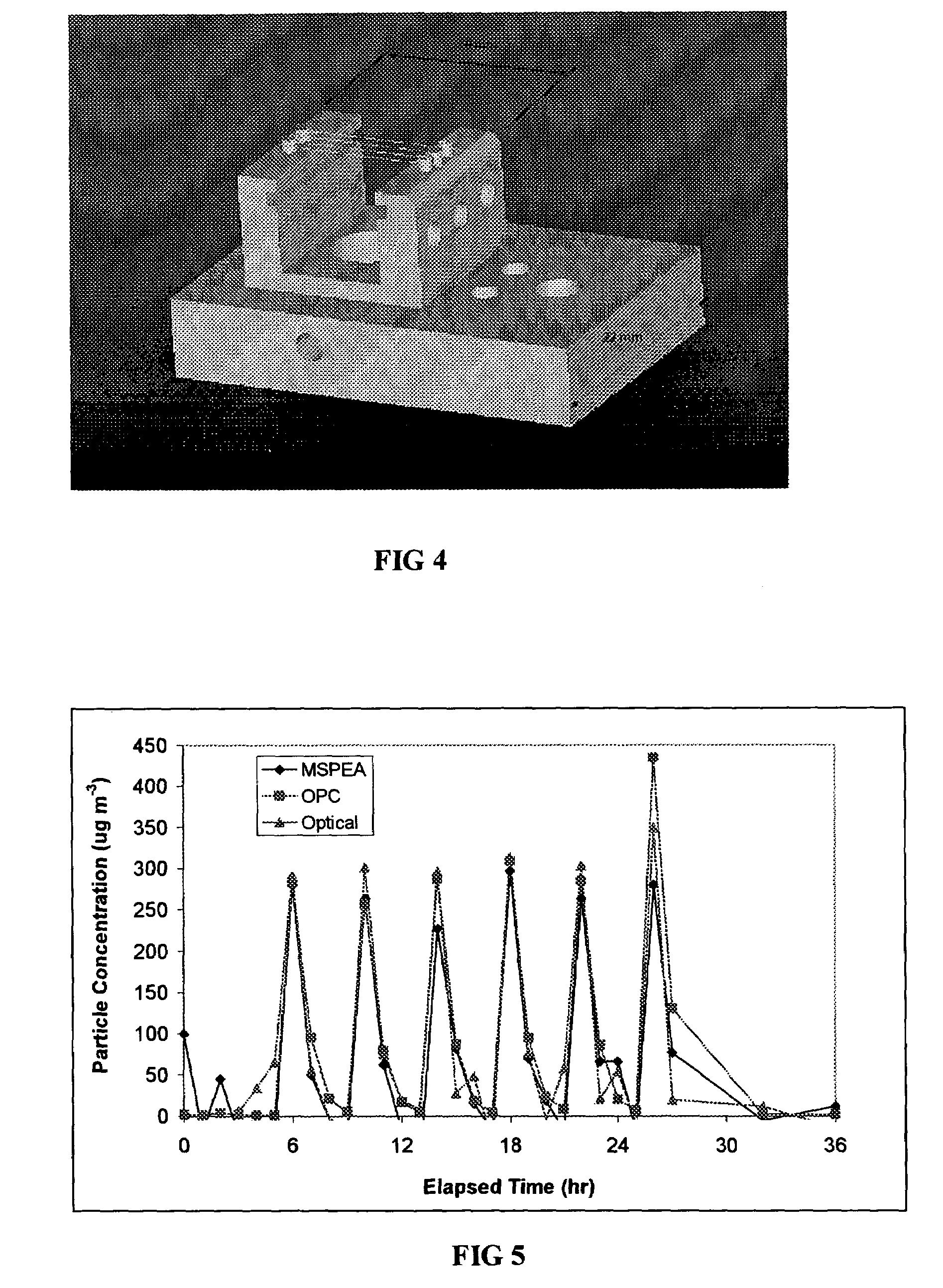Apparatus for particulate matter analysis
a technology of particulate matter and apparatus, which is applied in the direction of material analysis using wave/particle radiation, weighing by absorbing components, instruments, etc., can solve the problems of insufficient pm exposure techniques, limitation of pm measurement, and too expensive pm exposure monitoring
- Summary
- Abstract
- Description
- Claims
- Application Information
AI Technical Summary
Problems solved by technology
Method used
Image
Examples
Embodiment Construction
[0021]In a most preferred embodiment of the present invention the MSPEA comprises four basic elements. However, it is understood that all elements are not necessary for the MSPEA of the present invention to function.
[0022]First is an acoustic wave resonator. In a preferred embodiment there is a quartz crystal microbalance (QCM) mass sensor employed as a particulate matter deposition surface. The particulate matter is collected on the surface. The resonator is connected to an electronic oscillator circuit. As particle mass is deposited onto the crystal, mechanical loading reduces the natural resonant frequency of the crystal. The frequency of the sample-collecting crystal is compared to that of a reference crystal to create a difference or “beat” frequency signal. Changes in this difference frequency can be readily determined with an accuracy of 0.1%. The difference frequency changes at a rate (measured in units of hertz per minute) that is proportional to the rate of collection of m...
PUM
| Property | Measurement | Unit |
|---|---|---|
| distance | aaaaa | aaaaa |
| distance | aaaaa | aaaaa |
| temperature | aaaaa | aaaaa |
Abstract
Description
Claims
Application Information
 Login to View More
Login to View More - R&D
- Intellectual Property
- Life Sciences
- Materials
- Tech Scout
- Unparalleled Data Quality
- Higher Quality Content
- 60% Fewer Hallucinations
Browse by: Latest US Patents, China's latest patents, Technical Efficacy Thesaurus, Application Domain, Technology Topic, Popular Technical Reports.
© 2025 PatSnap. All rights reserved.Legal|Privacy policy|Modern Slavery Act Transparency Statement|Sitemap|About US| Contact US: help@patsnap.com



